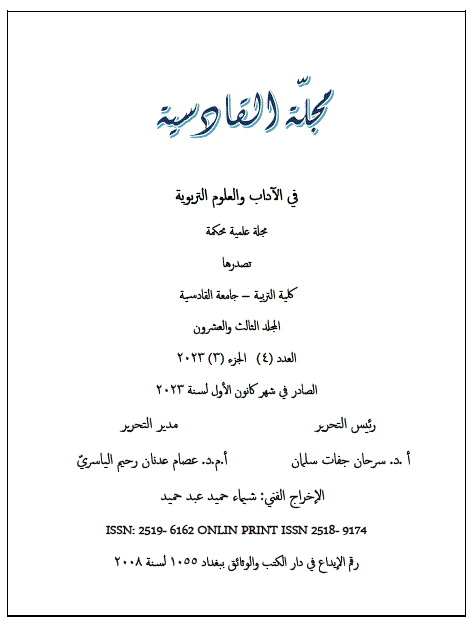الذّكاء التَّواصلي في مقامات بديع الزَّمان الهمذاني المقامة الجرجانية أنموذجًا
Abstract
This research aims to study the maqamat of Badi’ al-Zaman al-Hamadhani using a new perspective that considers the communicative intelligence theory which seeks to prove that the eloquence of the maqama is not limited to rhetoric or verbal artifice or the use of ‘kudyah’ (begging poetry) as relied upon by previous composition theories. Rather, it opens to new visions and expands to other implications and concepts including linking the maqama discourse with the communicative intelligence theory, which means that the maqama composer has lexical, syntactic, and rhetorical competence that goes beyond general competence and average linguistic knowledge. It also considers the reader's interest in the aesthetic tradition and how it employs expressive forms, rhetorical methods, and usage of the norms of eloquent communication.
The research defined the concept of the communicative intelligence theory and sought to apply it to the Jurjanian maqama as a suitable model for the application of that theory. It focused on the expressive forms employed by Badi’ al-Zaman to achieve his purposes, traced the phenomenon of textual openness and the overlapping of literary genres in the Jurjanian maqama, and analyzed communicative intelligence as forms used by interlocutors in spaces of eloquent communication.









